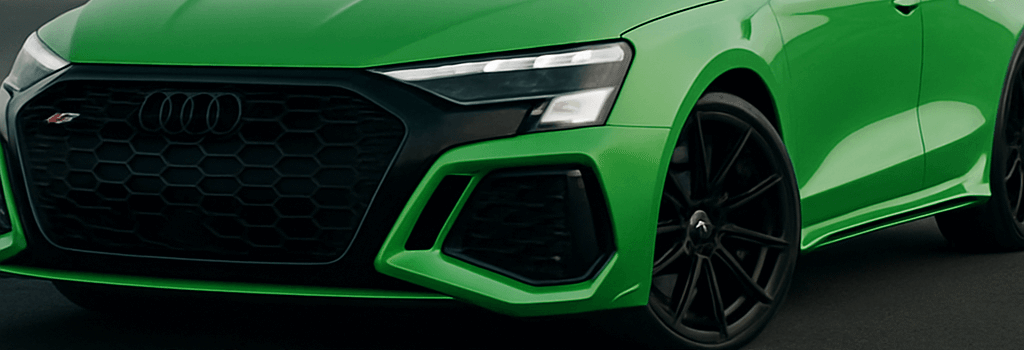2025 Audi RS 3: The Revived Five-Cylinder Masterpiece

Evolution of an Iconic Engine Layout
First introduced by Mercedes-Benz in 1974, the five-cylinder configuration has occupied a unique niche in automotive engineering. Narrower than a V6 yet smoother and more potent than an inline-four, the straight-five found its greatest expression in Audi rally legends such as the Sport Quattro S1 E2. Today, the 2025 Audi RS 3 stands as the last production car to carry this crown jewel of powertrains.
Design and Aerodynamics Updates
For model year 2025, Audi has refined the RS 3 exterior with revised front and rear fascias. The new bumper features enlarged air intakes and underbody airflow channels to cool the high-performance intercooler cores. Matrix LED headlights employ micro-reflector segments for adaptive beam shaping, while redesigned 19-inch forged wheels reduce unsprung mass by 1.2 kilograms per corner.
Under the Hood: Powertrain and Drivetrain Upgrades
The heart of the RS 3 remains its 2.5-liter turbocharged inline-five. Key specifications include a bore of 82.5 mm, a stroke of 92.8 mm, and peak boost pressure of 1.5 bar. A bar-cooled twin-scroll ceramic ball-bearing turbocharger delivers transient response under 200 milliseconds from idle. High-pressure direct injection operates at 350 bar, complemented by port injection for intake valve cooling.
Power output is unchanged at 401 hp and 369 lb-ft of torque, but Audi’s latest engine control unit features a 32-bit processor and over-the-air calibration updates. The seven-speed dual-clutch transmission has uprated mechatronics with faster shift times and lower internal losses. At the rear sits the RS Torque Splitter, an electro-hydraulic multi-clutch differential capable of routing up to 100 percent of rear torque to one wheel for precise cornering control.
Technical Highlights
- High-flow air intake with 3D-printed aluminum manifold
- Enhanced water-to-air intercooler with variable bypass valves
- Lightweight forged aluminum pistons with low-friction coatings
- Adaptive dampers with nine levels of electronic damping control
- Carbon-ceramic front brakes with monoblock six-piston calipers
Cabin and Interface Refinements
Inside, the RS 3 gains a flat-top and bottom steering wheel borrowed from modern supercars, complete with two dedicated RS Mode buttons. Although the capacitive touch panels replace traditional toggles, Audi has improved haptic feedback algorithms to reduce false inputs by 30 percent. Multicolor ambient lighting now spans 26 zones, and revised sport seats use 7-axis electric adjustment and integrated cooling channels.
Engineering Deep Dive
To understand the RS 3’s handling prowess, one must examine the control logic of the rear differential. Audi engineers employ a predictive torque vectoring algorithm that processes yaw rate, steering angle, lateral acceleration, and individual wheel speeds at 1,000 Hz. By dynamically modulating clutch pack pressure up to 120 bar, the system can overdrive or underdrive a rear wheel by up to 20 percent relative to the opposite wheel, dramatically reducing understeer.
“We achieved a 40 percent faster response in torque split changes compared to the previous generation,” says a lead drivetrain engineer. This means sharper turn-in and more controllable oversteer at the chassis limits.
Benchmark Performance and Testing Data
- 0–60 mph in 3.6 seconds, measured with launch control on Pirelli P Zero Trofeo R tires.
- Nürburgring Nordschleife lap in 7 minutes 37 seconds, a 7.2-second improvement.
- 60–0 mph braking in 101 feet with optional carbon-ceramic brakes, pad friction coefficient of 0.45.
Independent dynamometer tests confirm a peak specific output of 160 hp per liter, one of the highest in its class. In back-to-back track sessions, experienced drivers report 10 percent higher lateral grip and 15 percent more consistent brake fade performance over a 20-lap stint.
Future of Five-Cylinder Engines
With Audi phasing out the TT-RS and RS Q3, the RS 3 may indeed be the final hurrah for production straight-fives. Industry insiders speculate that a hybridized five-cylinder could appear in limited-run models, pairing electric boost with the distinctive exhaust note. Advances in synthetic fuels and combustion optimization may extend the configuration’s viability for niche sports cars.
Conclusion
The 2025 Audi RS 3 stands as a testament to the enduring appeal of the five-cylinder engine. Through targeted aerodynamic refinements, advanced drivetrain electronics, and thoughtful cabin updates, Audi has delivered an engaging performance sedan that balances everyday usability with track-focused thrills. As the last of its kind, it ensures the five-cylinder’s legacy goes out on a high note.